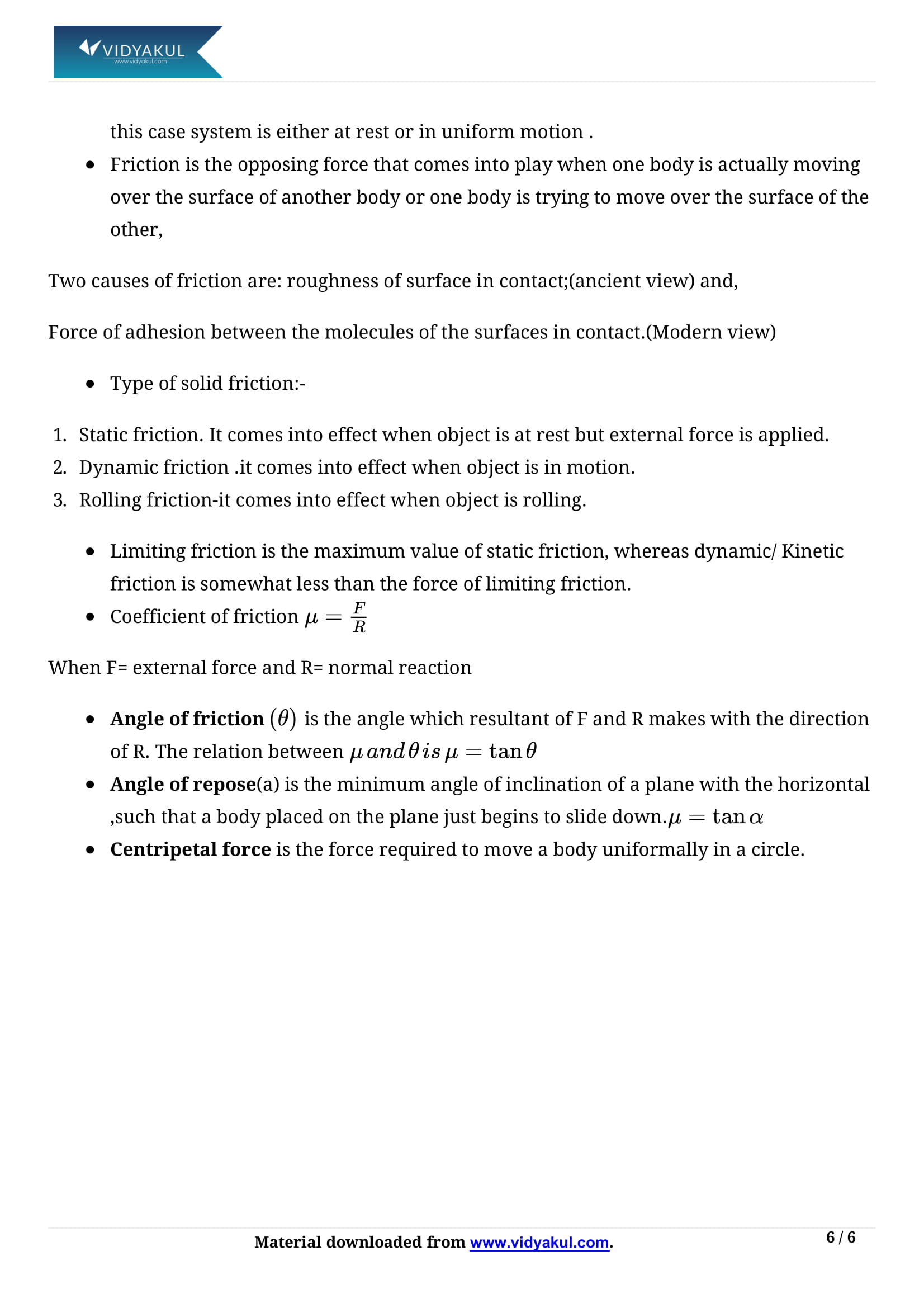Class 11 Physics Chapter 3 Motion in a Straight Line Notes

Chapter 3 Motion in a Straight Line
Physics Grade 11 Chapter 3, Linear Motion focuses on the concept of motion and its role in the universe. It teaches that motion is simply the change in position of an object over time.
This article has provided a detailed NCERT step-by-step notes for Year 11 Physics Chapter 3 for students to practice text questions. Vidyakul subject matter experts have prepared notes for you. Students can follow the learning materials available on Vidyakul to better understand the concepts, so they can work to improve their work in the long run. Read on to get the NCERT notes for Chapter 11 of Physics.
CBSE CLASS 11th PHYSICS CH-3
Points to Remember
To help guide students in their exam preparations for NCERT 11th Physics Chapter 3 Motion in a Straight Line, we have provided some of the important points to remember below:
Average speed is the ratio of the total distance to the total time.
Average Velocity is the ratio of the total displacement to the total time.
Instantaneous Velocity is the rate of displacement with respect to time
Average acceleration is the ratio of total change in velocity to the total time taken.
Instantaneous Acceleration is the rate of change of velocity.
The slope of the distance-time graph gives speed.
The slope of the displacement-time graph gives velocity.
The slope of the velocity-time graph gives acceleration.
The area under the velocity-time graph gives displacement.
The area under the speed-time graph gives distance.
The area under acceleration time gives change in velocity.
Topics and Sub-topics
Before you start preparing for NCERT Class 11 Physics, you should be familiar with the topics and subtopics of NCERT Class 11 Physics Chapter 3. NCERT Class 11 Physics Chapter 3 A thorough knowledge of the subject will help you absorb information quickly.
Few Important Questions
What is difference between 1D and 2D motion?
1D motion means motion in One dimension. That is the body moves only in one axis either x y or Z. Or simply it moves only linearly.
Whereas 2D motion involves motion which is defined as the combination between two axes.
What is non-uniform motion?
Non-uniform motion is the motion of an object wherein the object moves at different speeds and does not cover the same distance at equal time intervals.
What is ‘Acceleration’?
The rate at which velocity changes with time, in terms of both speed and direction is called as acceleration.
Practice Questions
In which of the following examples of motion, can the body be considered approximately a point object:
(a) a tumbling beaker that has slipped off the edge of a table
(b) a monkey sitting on top of a man cycling smoothly on a circular track.
(c) a railway carriage moving without jerks between two stations.(d)a spinning cricket ball that turns sharply on hitting the ground
The position-time (x-t) graphs for two children A and B returning from their school O to their homes P and Q respectively are shown in Fig. 3.19. Choose the correct entries in the brackets below ;
(a) (A/B) lives closer to the school than (B/A)
(b) (A/B) overtakes (B/A) on the road (once/twice)
(c) (A/B) walks faster than (B/A)
(d) A and B reach home at the (same/different) time
(e) (A/B) starts from the school earlier than (B/A)
Average speed is the ratio of the total distance to the total time.
Average Velocity is the ratio of the total displacement to the total time.
Instantaneous Velocity is the rate of displacement with respect to time
Average acceleration is the ratio of total change in velocity to the total time taken.
Instantaneous Acceleration is the rate of change of velocity.
The slope of the distance-time graph gives speed.
The slope of the displacement-time graph gives velocity.
The slope of the velocity-time graph gives acceleration.
The area under the velocity-time graph gives displacement.
The area under the speed-time graph gives distance.
The area under acceleration time gives change in velocity.
What is difference between 1D and 2D motion?
What is non-uniform motion?
What is ‘Acceleration’?
In which of the following examples of motion, can the body be considered approximately a point object:
(a) a tumbling beaker that has slipped off the edge of a table
(b) a monkey sitting on top of a man cycling smoothly on a circular track.
(c) a railway carriage moving without jerks between two stations.(d)a spinning cricket ball that turns sharply on hitting the ground
The position-time (x-t) graphs for two children A and B returning from their school O to their homes P and Q respectively are shown in Fig. 3.19. Choose the correct entries in the brackets below ;
(a) (A/B) lives closer to the school than (B/A)
(b) (A/B) overtakes (B/A) on the road (once/twice)
(c) (A/B) walks faster than (B/A)
(d) A and B reach home at the (same/different) time
(e) (A/B) starts from the school earlier than (B/A)
Learn more about it in Class 11 Physics Chapter 3 Motion in a Straight Line Notes pdf.
Download this solution for FREE Download this PDF









